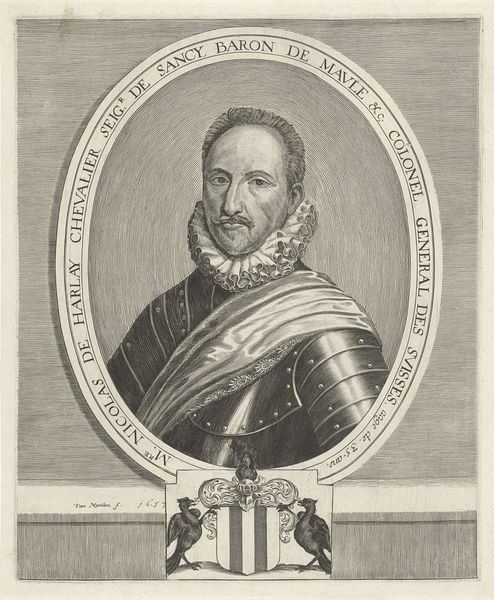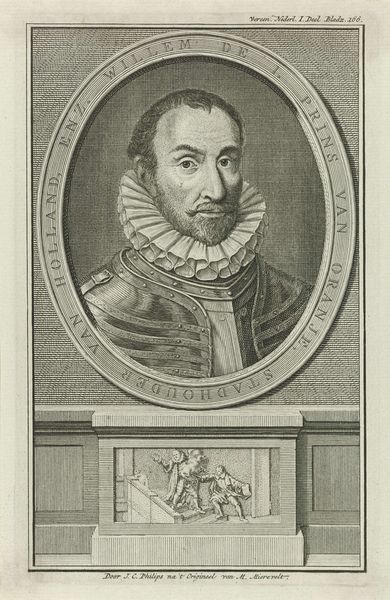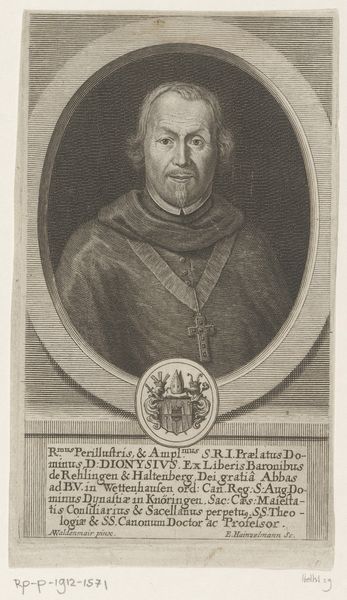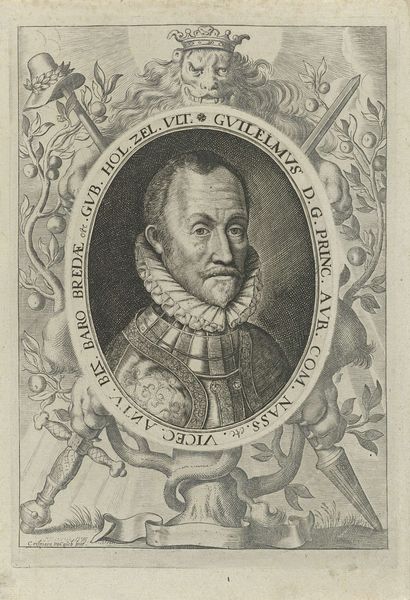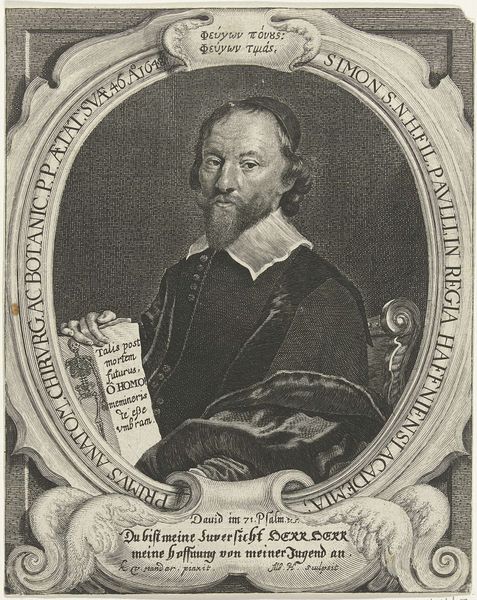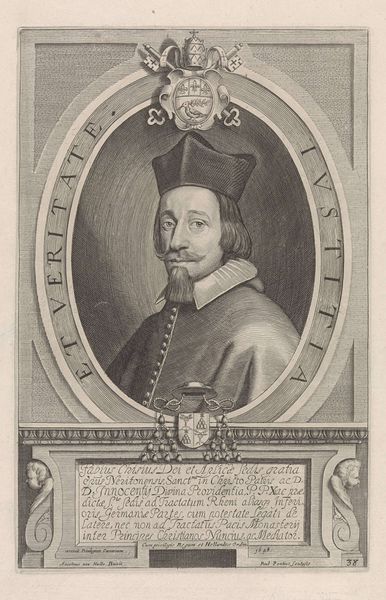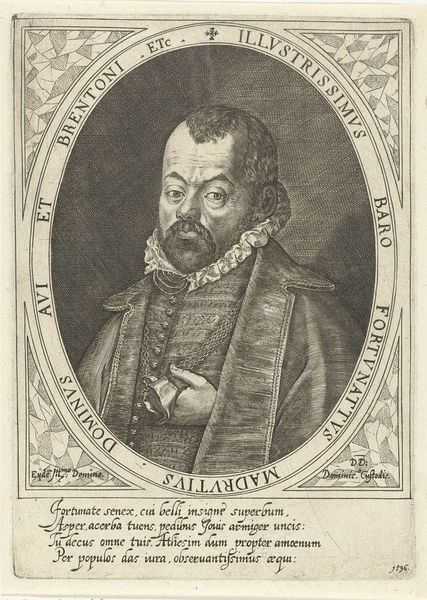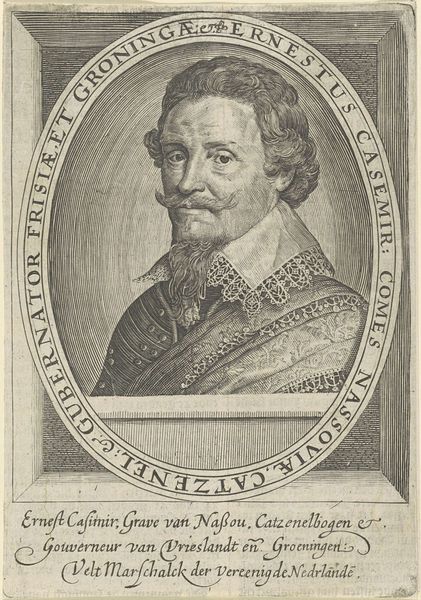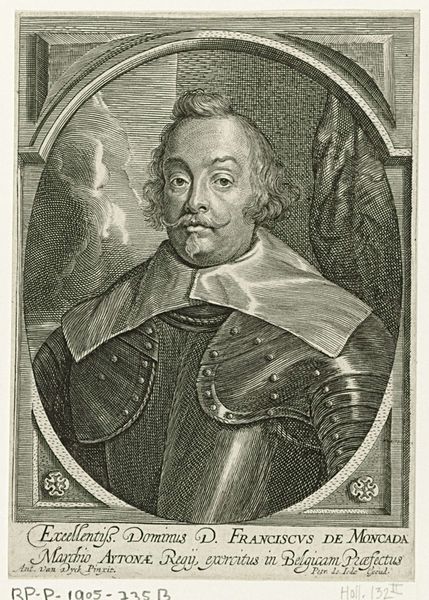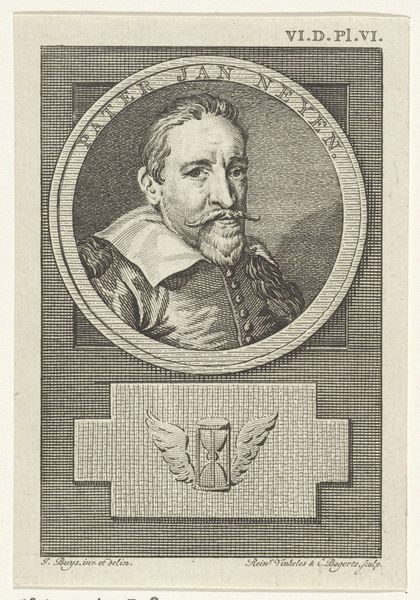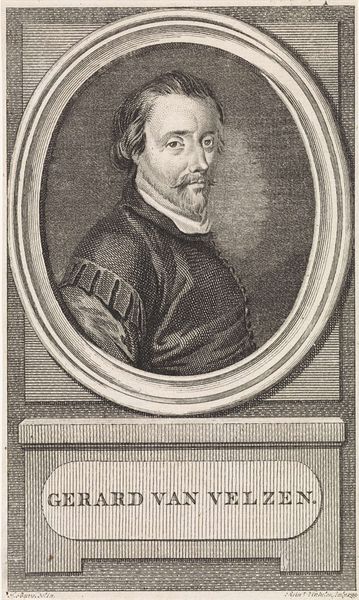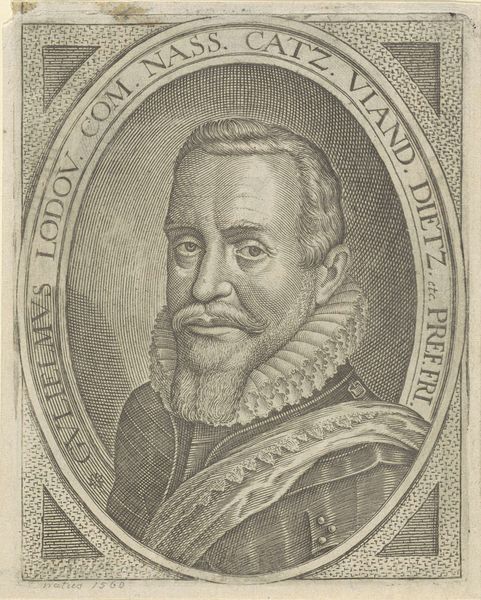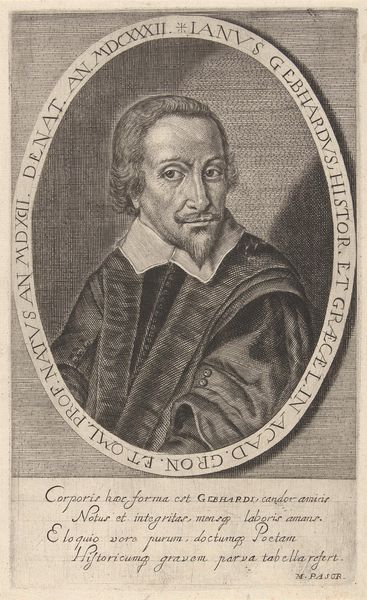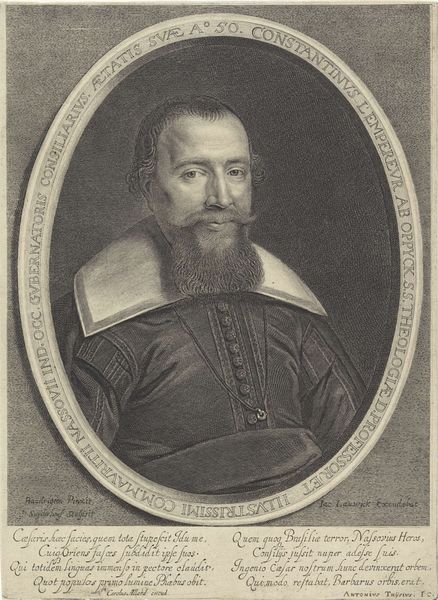
engraving
#
portrait
#
baroque
#
old engraving style
#
pencil drawing
#
portrait drawing
#
history-painting
#
engraving
Dimensions: height 302 mm, width 249 mm
Copyright: Rijks Museum: Open Domain
Editor: This is a portrait of Achille de Harlay de Sancy, made in 1652 by Theodor van Merlen II. It's an engraving. The details are incredibly fine; you can really see the textures in his robes and even his hair. The mood seems formal and a bit somber. How do you interpret this work? Curator: Well, seeing this engraving through a historical lens, several things stand out. First, portrait engravings like these were crucial for disseminating images of power and status in the 17th century. They weren't just about likeness; they were about constructing a public persona. Look at the inscription around the oval. "Achilles de Harlay…at the age of 57." It's very deliberate. Does that suggest something about the intention and reception? Editor: You mean it's almost like public relations? Like controlling how he was seen by others? Curator: Exactly! Also, the inclusion of the coat of arms further emphasizes his lineage and authority. The Catholic church in that era was deeply intertwined with politics and aristocracy. How might his position as bishop have shaped both the production and consumption of this portrait? Editor: So it's less about capturing his soul, and more about projecting an image of power sanctioned by both family and church. It makes you wonder about the power dynamics at play between the sitter, the artist, and the audience, doesn't it? Curator: Precisely! And consider the role of the printing press – making these images widely accessible, and shaping public perception. Think about what it meant to control access to imagery then versus now, in the digital age. What has changed and what has stayed the same? Editor: I never thought about portraiture as a tool for social positioning, really insightful to consider how these pieces functioned in society. Curator: Indeed! The piece reminds us how art can act as an instrument to create visibility in specific historical context.
Comments
No comments
Be the first to comment and join the conversation on the ultimate creative platform.
